
The type and size of shelter you choose for your epic bikepacking trip will vary widely depending on your goals. Are you traveling solo, or with a small group? Are you riding light and fast in race mode, or taking your time and looking for a added protection at camp?
Nemo Equipment is an acclaimed backpacking gear brand, and they’re working to break into the bikepacking niche by releasing products that they claim are bikepacking-specific. They bill their new Apollo 3P shelter as a “bikepacking tent,” and recommend combining it with the Moonwalk sleeping bag and Escape Pod bivy for the ultimate bikepacking setup. I tweaked the system slightly to my own needs, combining the Apollo 3P with the Argali 15F sleeping bag and Tensor Insulated sleeping pad. While Nemo sent over the Escape Pod bivy (basically a bug net) and I did do a test setup, I chose not to pack it on any adventures because, as long as you choose your campsite well, there’s very little chance of encountering serious mosquitoes in Colorado’s High Rockies.
Here’s how the Apollo 3P performed on my bikepacking trips this summer Click here for my analysis of the Argali + Tensor Insulated.
Specs

The Apollo 3P is essentially a tarp shelter that is pitched like a tent. It doesn’t have a floor and features a single wall construction, yet if you pitch it with the edge close to the ground it attains the form factor and much of the function of a tent, with plenty of headroom and a zippered door.
The Apollo’s single wall membrane is made of 15D Sil/PU Ripstop Nylon (1200mm). It offers 57 square feet of floor space, up to 58 inches of interior height, and is rated for up to 3 people.
The default setup of the Apollo utilizes an expandable aluminum pole in the center of the tarp to give it its shape. The sides are then staked out, and the guy lines are stretched out and staked (or attached to trees or rocks) to provide more stability. However, there is a guy line from the top of the exterior of the tent that could theoretically be used to tie the top to an overhanging branch, thereby eliminating the weight and the awkwardness of carrying the pole.
According to Nemo, the minimum weight of this shelter is 1lb 5oz (569g) and the packaged weight with all stuff sacks, poles, and included instructions–everything–is 1lb 8oz (704g). Here’s what I found for measured weights using my kitchen scale.
According to my scale, if you pack everything, including all stuff sacks, guy lines, stakes, the pole, and a couple of ultralight carabiners for attaching guy lines (added), total weight comes to 2lbs 1oz (935.5g).
Of that 33oz weight, here’s the breakdown:
- Tent alone with included guy lines: 1lb 2oz (510g)
- Aluminum pole: 9.7oz (275g)
- Stakes: 2.4oz (68g)
- Stuff sacks and carabiners account for the rest: 2.9oz
Based on this analysis, the pole contributes a substantial amount of weight to this shelter. The only way to come close to the claimed minimum weight is to use the shelter without the pole.
Out on the Trail

As I took to the trail with the Apollo shelter, I couldn’t bring myself to leave the 9.7oz of pole weight at home. In theory, tieing the top of the shelter to a tree limb makes sense… until you start looking at the trees we have here in Colorado. In many places, there are no trees. In others, the trees you find are short, worn by the weather, scraggly, and useless. Even the taller trees rarely offer limbs long enough to reach out over a tent. The limbs on the bigger aspen trees don’t start until almost the very top, and they’re diminutive in size. Lodgepole pines have very few limbs to speak of. Your best bet would be a ponderosa pine, but finding the perfect type of tree in the perfect climate zone, and then finding the perfect limb, all with the perfect flat spot below it, and not too far from water… locating such a site seemed like too big a gamble to take, so I packed the pole on all of my trips.
At first I was frustrated by this–more weight and more space in my pack! I had heard from some other people who have tried this shelter that they chose to stash the pole in their frame bag, but I was unwilling to sacrifice so much room for a piece of metal. But I found the perfect solution: I carry the pole by sliding it through the straps of my handlebar roll. It doesn’t take up any room inside my bags, is easy to slide in and out when I’m pitching camp, and stays solidly in place–perfect!

Another alternative is to locate a stick at your campsite that’s approximately the right size and sufficiently strong to support the tent.
There’s still the issue of the weight… but the Apollo is a large shelter. While I never did try it with three people and that would undoubtedly be a tighter squeeze, all the nights I spent in the tent found two people under its nylon expanse, and we had substantial room for two full-grown men and as much gear as we needed. In fact, we could have stored much more gear in the tent if needed.

If you’re using the Apollo for two people, sharing the weight is easy, and no single person needs to carry more than a pound of shelter weight–impressive. For comparison, the ultra-lightweight Specialist Solo shelter weighs 1lb 6oz, only sleeps one person, and I found myself unimpressed with its durability. But of course, the Specialist Solo is a completely enclosed shelter, unlike the Apollo.
Setup

Another benefit of carrying the aluminum pole is the ease of setup, because even in the best of times, the Apollo can be a bit tricky to get upright. My first test pitch took quite some time and wasn’t perfect, but that’s why I did a test pitch. I posted a photo to my Instagram account, and a helpful follower chimed in, saying that he had the same shelter and through trial and error had finally found the perfect process. Here’s @pitchkitgoral’s recommendation: “Use the guy line in the little pouch to measure the distance for your front 2 stakes. Then pull the back 2 straight out and stake. Set the door stake last.”
While I never did figure out how to use the guy line to measure the distance for the front two stakes, the key from this advice is to begin at the back of the shelter and work your way toward the door. Once I have the tent staked out, I guy out the upper lines for extra support. I also do a secondary circle of the tent, eliminating all the final slack for a nice, taut pitch (I’ve gotten better at this with practice). I generally put a little bit less tension on the line near the door, so it’s easier to zip and unzip the door.
Despite being trickier to pitch than a tent, I found the dome + pole design to be radically simpler to pitch than a standard rectangular tarp shelter.
Performance and Durability

Thankfully, aside from some moderate wind, I have yet to encounter any serious weather conditions in the Apollo shelter. That said, I am pretty pleased with the durability of this shelter so far. Thanks to its simplicity, there’s very little that can go wrong with the Apollo 3P. The single pole is stout, and when combined with the sloping walls and supportive guylines I’m confident that it will hold up well in windy conditions.
While I tried to pitch the bottom of the tarp as close to the ground as possible, some wind would still inevitably blow up and under the lower edge–which is par for the course with a tarp shelter. If you want to block out the wind entirely you’ll have to go with an enclosed shelter, but in my experience, the shape of the Apollo does a much better job of blocking the wind than a rectangular tarp.
Without spending the night in a serious rainstorm it’s tough to predict just how well the shelter would fare, but I would wager that you’d be relatively comfortable, especially with just one or two people. With the shelter pitched in the low position, the base is spread out substantially, so if you put your bag in the center of the tent there should be enough cloth spreading around you that you should stay pretty dry.
Finish Line
It’s tough to say whether I’m a fan of the Apollo’s design and almost mandatory use of a center pole, or not. The pole makes the shelter significantly easier to pitch than a tarp, provides plenty of headspace and shelter from the wind, and has been bombproof during my test. However, you have to haul the pole around with you–extra weight if riding solo. But if you’re industrious and are riding in an area with a lot of down sticks, or you can find a good limb to guy out the top of the shelter, it’s possible you can ditch the pole.
I would consider the Apollo 3P an excellent shelter for a pair of bikepackers. With plenty of space for two people and all their gear, and really low weight if split between two bikes, I plan to continue using the Apollo during my 2018 bikepacking season.
MSRP: $300
Thanks to Nemo for providing the Apollo 3P for review.





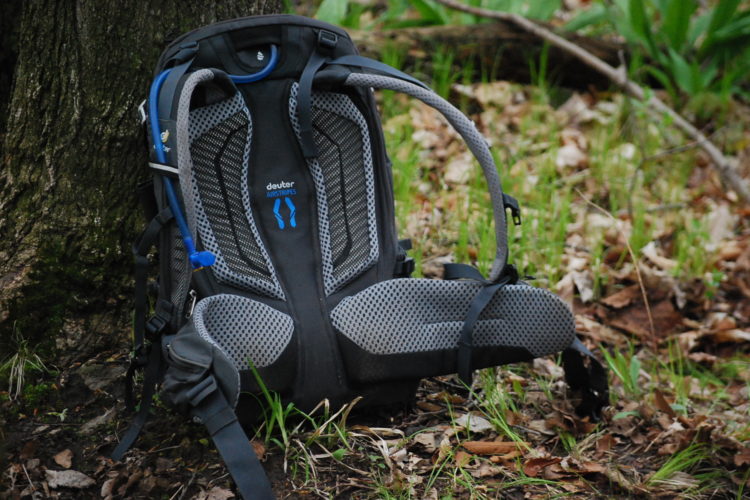
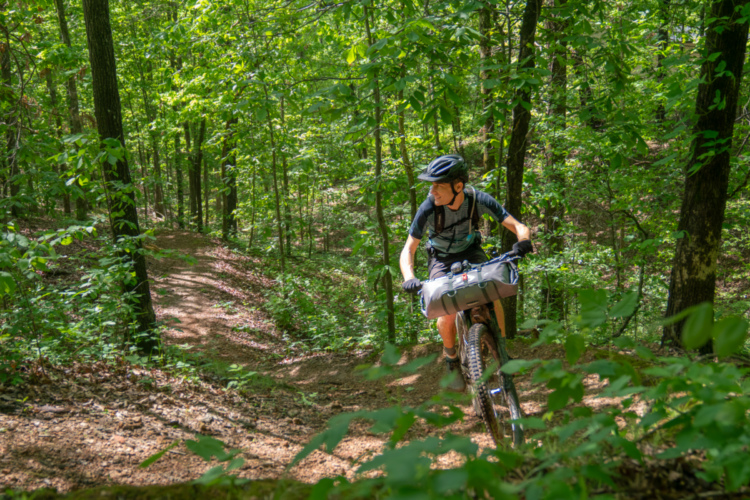
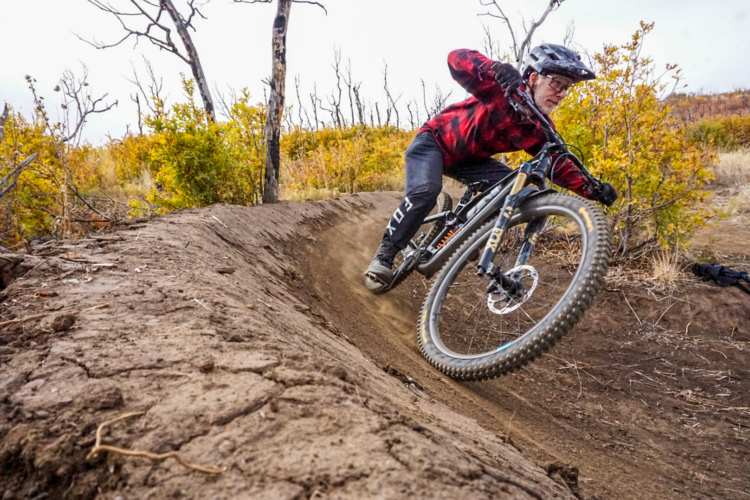
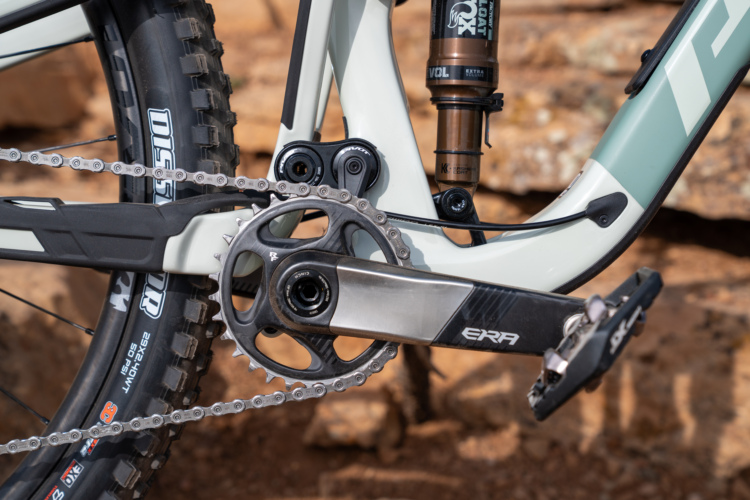
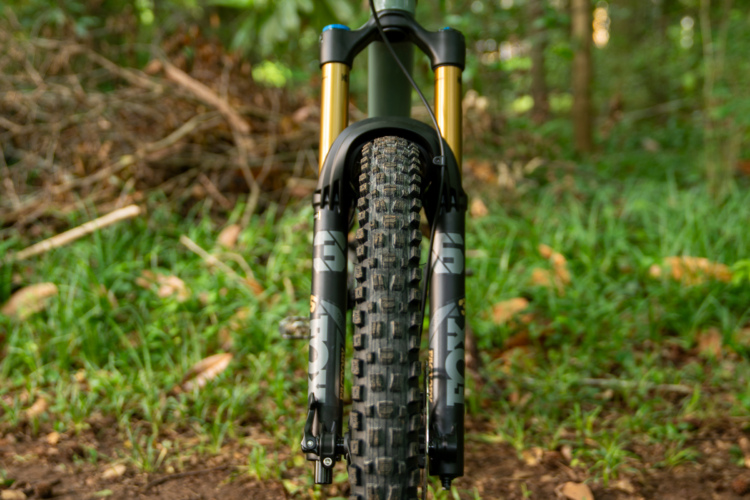

2 Comments
Nov 17, 2017
Nov 18, 2017